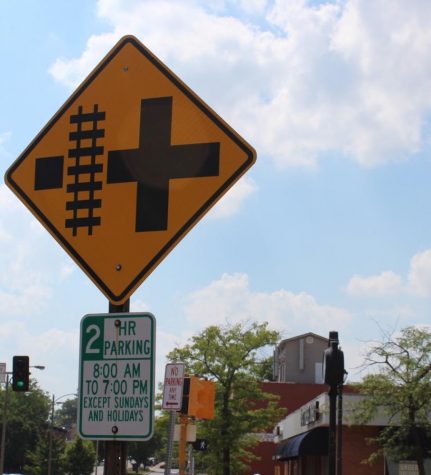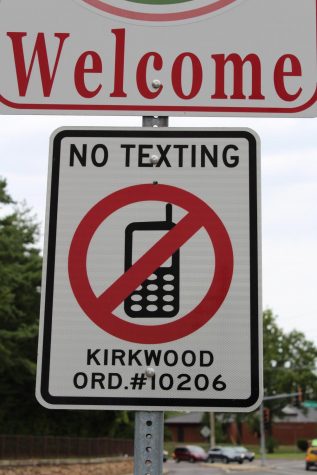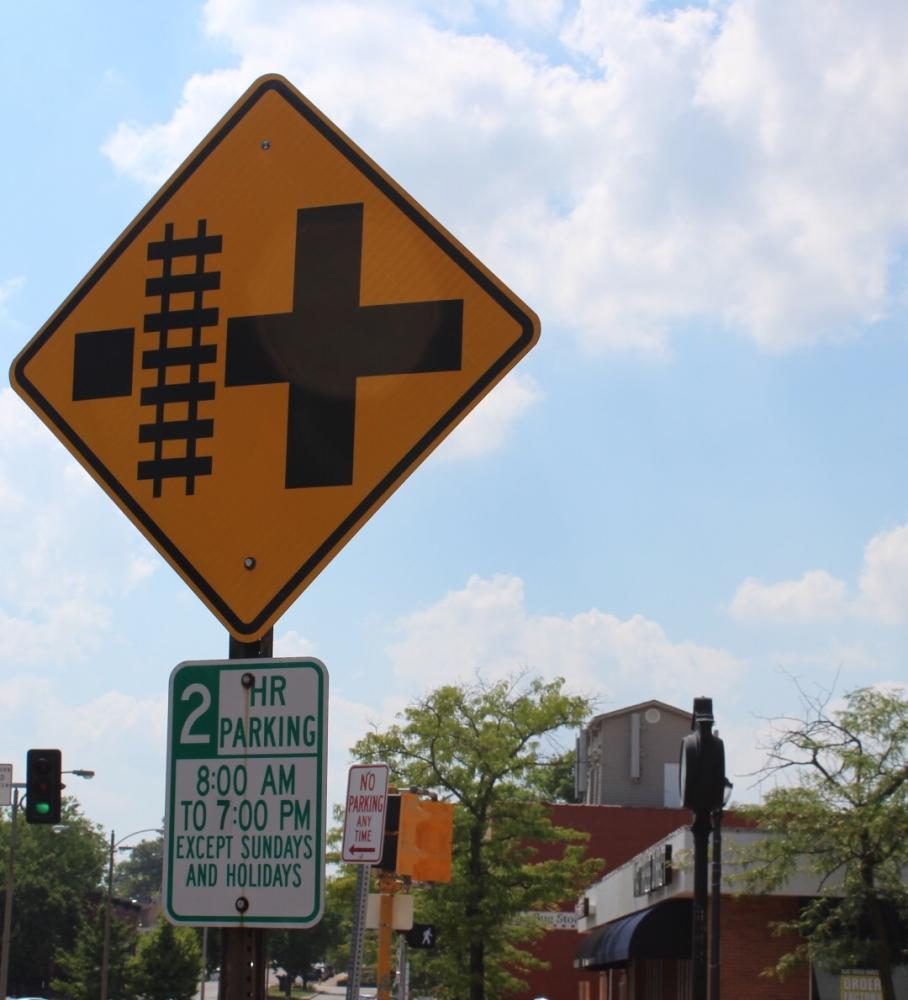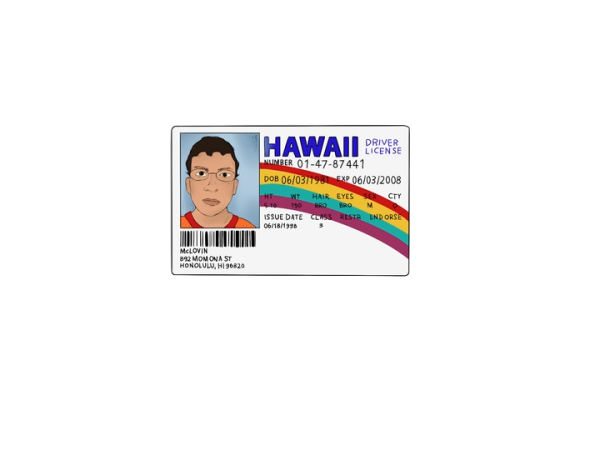The driver’s ed disappearance
Along with her fellow sophomores, Annika Kline soon will finally be able to hop in her car and drive on her own. She will no longer have to ask her parents for rides and will eventually be able to drive to and from school. Like her parents, she has been through a driver’s ed course and has learned about the rules of the road. However, not all of her classmates will take driver’s ed like she did.
Driver’s ed is not offered at KHS, and taking it is not mandatory in Missouri to obtain a learner’s permit or a driver’s license. According to the Department of Motor Vehicles, Missouri is one of only five states, others including Alaska, Arkansas, Oregon and Tennessee, that do not require some type of driving lesson.

Picture of a railroad crossing sign in downtown Kirkwood.
“The funding aspect of purchasing a car and hiring a teacher would add up to be quite a substantial cost,” Brian Coulter, driver’s ed teacher, said. “I guess [Missouri lawmakers] figure driver’s ed is not as important as some of the other subjects that are mandatory.”
Coulter teaches driver’s ed during the summer at Lindbergh High School. He has been teaching the course for 15 years.
“I view [teaching driver’s ed] as a way of contributing to the safety of our young drivers so that we all can continue to be life-long safe drivers,” Coulter said. “There are a lot of things that parents are doing while they’re driving that they may not be vocalizing to their kids.”
Annika is one of six KHS sophomores who took driver’s ed at Lindbergh this summer. The course includes 16 hours of in-class instruction, which involves practicing driving on simulators, learning about rules, real occurrences, situations and more. Additionally, students have three hours of driving time with an instructor.
“The part where you were actually in a car with a person was really helpful, but the in-class part was not so helpful for me,” Annika said. “The in-class part is more tailored to kids who are reckless drivers or kids who are not afraid of driving.”
Because driver’s ed is not required in Missouri, some teens do not feel the need to take the course. Some prefer to learn from their parents rather than an instructor. I feel like people just get in a car after passing their permit test and they’re not really ready to drive.
“[Taking driver’s ed] is necessary so people can learn the rules,” Annika said. “I feel like people just get in a car after passing their permit test and they’re not really ready to drive. They just passed the permit test, which is really not that hard.”
In Missouri, in order to get a learner’s permit you are required to pass a 25-question multiple choice test, a vision test, a road sign test, have all of the proper documents and pay a fee of $3.50. After that, the permit holder can legally drive on the road with a parent or legal guardian.
“I think that you can study for a test and not understand the practical things you need to know about driving,” Cori Kline, Annika’s mom, said. “Just because you passed the permit test doesn’t mean you understand things that require practice, and I think it seems like a safer environment to do that with a certified driving instructor.”
Parents may also save money on insurance when their kids take driver’s ed. According to the Department of Motor Vehicles, one may qualify for a discount on auto insurance after completing an accredited driver’s ed course or defensive driving course.

Picture of a no texting sign.
“As driver’s ed teachers, we would love to have [a high school driver’s ed course] mandatory,” Coulter said. “We feel like [driving] is the one thing that you’re gonna do for the rest of your life that can be quite dangerous and is something that you need to know how to do well.”
Your donation will support the student journalists of Kirkwood High School. Your contribution will allow us to purchase equipment and cover our annual website hosting costs.

Interests: Tennis, baseball, reminiscing on the glory days of YouTube, posing as a food critic and knowing a ridiculous amount of information about Harry...

Interests: TKC, playing golf, reading, playing the violin, my pups & photography!
Favorite quote: “Do not fear failure but rather fear not trying.”...

Interests: Running, eating, hammocking, sunsets.
Favorite musical artist: Ben Rector.
Favorite quote: "You have known what it means to lose and...












